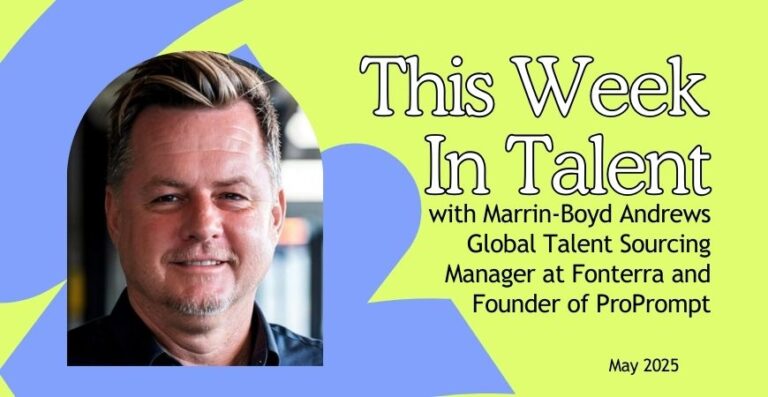Not long ago, an organisation’s employee value proposition (EVP) would only have needed to focus on the salary, bonuses and benefits offered, as well as how close the office is to public transport or a car park, amenities and social venues. Now, you must do more to sell the unique value and purpose of your company to potential employees.
Why? Because the world of work has changed and will continue to, quickly. What workers want from their employers has changed and their wants are as individual as they are. For example, someone looking for their next challenge may have fewer location-specific decisions to make but will likely be more concerned with non-office-based benefits such as internal skills training and development opportunities and the extent to which the company has embraced hybrid working.
What do the next generation of employees want and expect?
Workers are bringing a different set of expectations and behaviours to their search for a new role, with an increasing number of individuals looking for a company that is purpose driven, and that its purpose aligns with their own.
A company’s purpose is what the company is, why it exists and what it stands for, and this drives its decisions and actions. From mental health and wellbeing to sustainability and the environment, there is a growing expectation that organisations should be taking steps to make a positive contribution within the local and international communities in which they operate. It is therefore crucial that companies express their purpose within their EVP.
In addition to asking more of their employer, a rising number of individuals are increasingly cognisant of the value they add to organisations. Workers have a growing confidence in their own skills, especially among Generation Y. There has been a notable shift in mindset among the next generation; workers are looking to gather experience and are more confident in identifying how a role will provide them with certain skills. They are aware that the fastest way to progress their career is to move to a new organisation, rather than wait to be promoted.
This means a company’s workforce will become more transient unless there is an increased focus on worker retention. Having a strong EVP that remains consistent throughout the employee lifecycle will aid retention.
Unsurprisingly, workers have also placed added importance on flexible working and achieving a work-life balance. In fact, the Federal Government is currently reviewing Industrial Relations laws on many levels, including to make asking for flexible hours and conditions an ongoing right for workers. For companies to stand out from the competition when looking to engage new hires, you need to demonstrate you can offer what employees are looking for.
Tailoring your EVP to the next generation of employees
To stand out from the competition, tailor your EVP to the candidate or group of candidates you are targeting. You don’t need to create multiple versions, simply recognise there are foundations to your EVP and make sure those foundations can be adapted to appeal to each candidate grouping. For example, a hybrid working model is favoured by almost two-thirds of Australian employees, our Salary Guide report shows. This means it will be important to include provision for hybrid or flexible working options.
Workers are no longer solely motivated by pay and reward – the younger generations in particular want to understand the why more than the what and the how. Tailor your EVP to focus on the true benefits of a role for the worker, how they can advance their career at the company, how they can develop their skills and work on projects they can be proud of. For example, if your company needs to hire tech talent, focus on the broader ambitions of the organisation, how these ambitions will help society to get candidates excited about the work they will undertake and the value they will add, not just to the organisation but to the communities that you operate within.
Which part of the EVP an individual will take value from will vary depending on where they are in their career. This means companies will need to have insights into the type of candidates they want to attract and understand what will appeal to them at this stage in their career.
How to deliver your EVP to candidates: moments that matter
If you want to have a bigger impact on potential hires throughout the candidate lifecycle, consider the moments that matter in you recruiting processes.
First impressions count
Make sure you do your research and tailor your EVP according to the interests and motivations of your target audience – your candidates. If first impressions are positive in their eyes, half the battle has been won.
Although, a targeted EVP is just one piece of the puzzle when building a positive first impression. You will also need to ensure you are showcasing this EVP by delivering relevant content to the platforms utilised by your target audience when searching for their next role. This enables you to not only compete for their attention amid an increasingly crowded market, but to also assert credibility of your commitment to your employees.
Increasingly, this means operating in largely online environments. Review your digital estate for talent attraction and ensure that your EVP is well presented, otherwise you are less likely to convert passive interest into an active application.
Recently, Hays was tasked with engaging candidates for a partner organisation. Engagement campaigns were tailored to the candidate based on location, skills and interests, and localised content was published across multiple mediums in line with candidate expectations. Microsites were created to target early career talent, while job previews were delivered via video so candidates could gain an insight into what the job would be like.
These campaigns were hugely successful, offering individuals the opportunity to research roles using channels they trusted. The innovative use of video also provided vital insight into both the role and the organisation from the point of view of an existing employee.
Engage candidates in the right way, and keep them engaged
The hiring process is for candidates to assess if the company and the role are a good fit for them, as well as for the employer to assess whether the candidate is a good match for the role – companies that lose sight of this as a two-way process will be at a distinct disadvantage. Train hiring managers to act as brand ambassadors, and make sure they reinforce the culture and values of the company in a consistent way.
Your EVP should reflect your company’s culture and values, and this should be evident through every touchpoint the candidate has with your company during the hiring process. Authenticity is key to keeping a candidate engaged.
If you take time to understand and then engage with candidates in a way they want to be engaged with, your EVP and hiring process will be more successful.
Don’t become complacent in a competitive market
Competition for good talent is tight, so keep close to your potential hires and do not underestimate the number of offers and counter offers they may receive from other companies. Stay connected throughout the hiring process to make sure you deliver a good experience in support of your EVP. For example, follow up with each candidate within 24 hours of an interview and respond quickly to queries. Most importantly, remember to deliver on any commitments you make to updates or next steps.
A psychological contract with a new hire takes time to build and any negative experiences can be taken as indicative of what you will be like as an employer.
Fine-tuning your EVP
The ultimate test for your EVP is whether new hires recognise the promise you made in your EVP during their time at the company. Establishing feedback loops is a simple but effective way of validating whether the EVP is aligned to the experience.
Check in with new hires and existing employees every three to six months to get feedback on how their experience matches your EVP. If not already in place, a new starter survey is an excellent way of capturing feedback on a range of topics.
Actively seek feedback from all sources to contextualise how well your EVP is meeting current employee needs too. Employees will regularly share their views externally, impacting your new hires’ views on the company. Should they decide to leave, then an exit interview also provides an excellent opportunity to establish whether the EVP chimes with the experience the employee had at the company.
If the feedback loops indicate that improvements could be made, take the opportunity to review your EVP with the above context in mind to positively impact talent acquisition in the future and ensure a real focus on talent retention.
Monitoring the moments that matter
It is essential that companies recognise the increasingly important role the EVP will play in attracting, engaging and retaining workers. Working with a partner like Hays ensures you are continually updated on the changes to candidate expectations in the markets you operate in, enabling you to identify the shifts that require a more serious review of your EVP.
Once you’ve attracted the right talent, it is important leaders keep employees energised and motivated to drive business performance.
At Hays, our enterprise solutions team specialise in creating and delivering business-driven workforce programs that tackle today’s talent challenges. Partnering with you to provide the knowledge, expertise and innovation needed to shape a truly holistic workforce strategy, together.
Explore our featured insights.
Do you have a TA story to share? The ATC team wants to hear from you.






